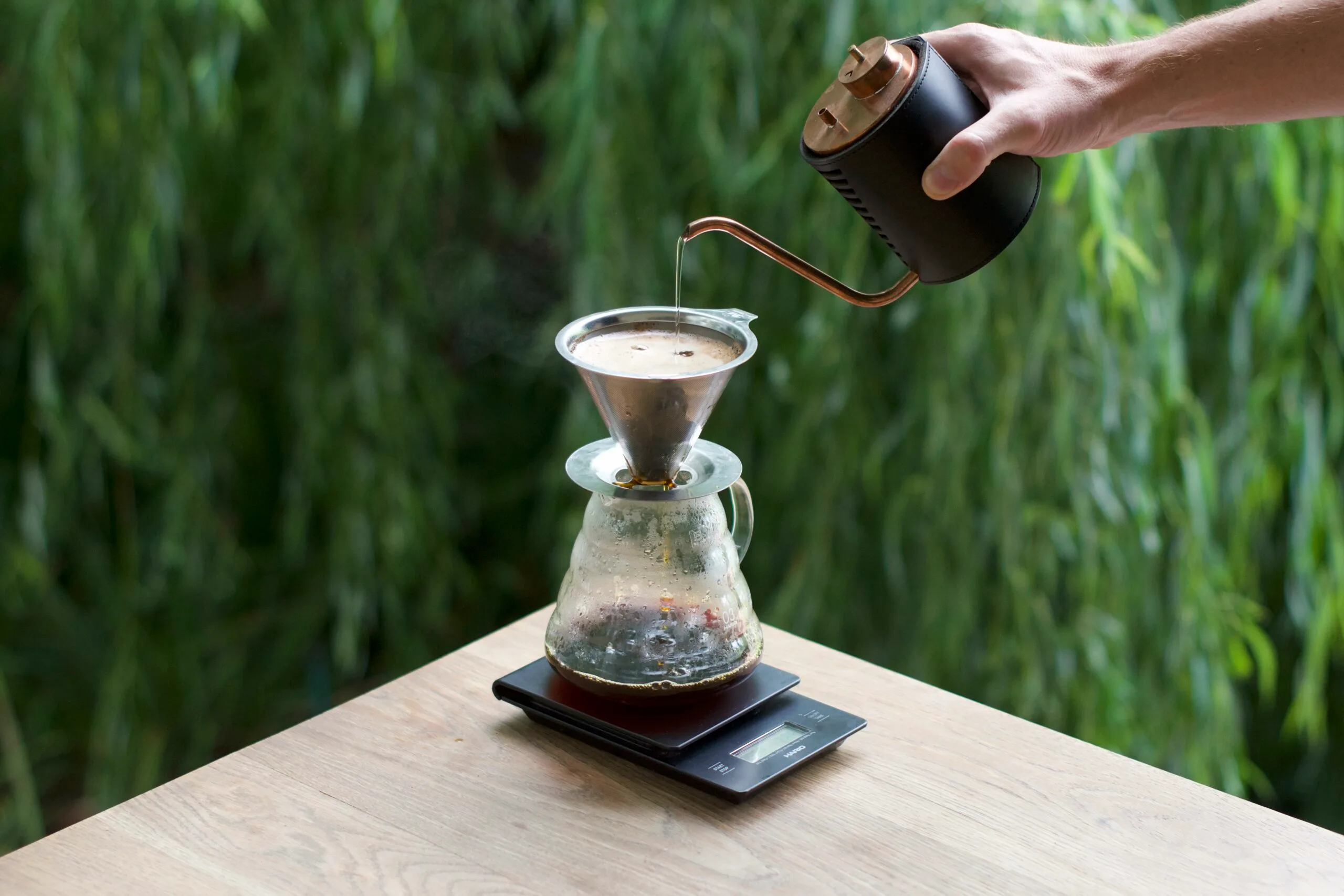The Best Ways to Make Coffee at Home

Everyone has a strong opinion about what is the best way to make coffee at home and how it should be done. The answer is actually very basic. The best cup of coffee is the one you enjoy. We could pit the Aeropress against the Hario V60 pour-over and debate which method is better until we’re blue in the face. But the truth is you can brew great coffee with any method.
Whether you love the ritual of making your cup manually or you adore your automatic coffee maker, there’s no wrong method—but each has its positives and negatives.
Batch Brewer
If your household drinks a lot of coffee or you just want something that’s convenient and essentially foolproof, a solid batch brewer such as a MoccaMaster is the way to go. The flavour of your cup will depend on the water you’re using, the ratio of grounds to water, and, of course, the type of coffee itself. For better coffee, start with freshly roasted beans and filtered water and use a scale to measure a coffee-to-water ratio of 1-to-16, or 16 grams of water for every gram of coffee. This is a great starting ratio, but you can (and probably should) adjust according to your preference.
French Press
The French Press is a classic brewing method that many of you own. It’s relatively cheap and straightforward. This method brews by soaking ground coffee directly in hot water – sans filter – rather than letting water pass through the grounds. Pour the grounds into the carafe, fill it with hot water, and stir it to make sure all of the coffee is properly saturated. Wait four minutes, put the lid on, and slowly depress the plunger to isolate all of the grounds at the bottom of the carafe.
If you want to make good French Press coffee, it is technically possible. Be meticulous with the cleaning, and pay attention to grind size and turbulence, and you’re already half the way. The mesh filtration-screen allows a lot of lipids to enter the cup. This makes it less vibrant and clean flavour-wise, but you do get more of that oomph that so many people crave.
Aeropress
Can you believe it, the Aeropress is already 17 years old. It’s difficult to imagine a world without it. Just ask our Lazy Bones adventurers.
When it first came on the scene, most people thought the Aeropress was a toy. After all, it was made by Aerobie, the company that previously only made frisbees.
But slowly, the Aeropress grew into a coffee cult classic. It even has its own world championship!
The best thing about the Aeropress is its convenience. It’s quick and easy to brew on. Cleaning is super simple as well. It’s perfect for home or outdoor use.
The second upside is its compact size. With the new travel version, the Aeropress Go, this aspect has been further developed. If you want to brew coffee on an airplane or when you’re out exploring, you can.
The Aeropress is a fun device to brew on. You can literally try thousands of different recipes and still get excellent results.
Moka Pot (Stovetop Coffee Maker)
It’s Old World but it’s a goodie. The Bialetti Moka Pot is the quintessential stovetop coffee maker. Its design goes back to 1933, yet it still has a modernity to it.
The Moka Pot produces a coffee that’s closer to espresso in terms of strength. Slightly burnt flavour notes often accompany its cups. Brewing on it is quite the site. Small crema-coloured bubbles form when the vapourised water finally comes out through the fountain, followed by a sudden outburst of scalding hot coffee.
It’s straightforward since there are no scales or measuring scoops involved. Just fill the water up to the valve, and fill the reservoir with coffee. It’s not the most accurate way to make coffee, but it gets the job done.
Espresso
Espresso has previously been seen as the best way to brew coffee. It somehow seems more sophisticated and better than the rest.
It’s indeed a more challenging way to brew. It’s also by far the most expensive coffee brewing method. Not only are the machines more expensive than all the other brewing methods, you also need a grinder capable of producing the ultra-fine grind required for a condensed coffee puck.
If you truly love coffee and want a new hobby, then it’s definitely worth it. It will be a steep learning curve but once you have everything dialled in, you will be enjoying amazing coffee in the comfort of your own home.
Pour Over
Pour over or hand drip coffee is a rather old technique and it’s had a huge renaissance in recent years.
It all began when Hario V60 suddenly came from out of nowhere, and became the brewer of choice in many specialty coffee shops in the US and Europe.
While the West had largely dismissed the minimalist pour over approach, it had flourished and developed in Japan, where Hario is from.
Since then many other Japanese brands have entered the market and cut out a slice for themselves: Kalita and Origami just to mention a few.
Pour over coffee seems simple and straightforward but it also has the potential to be a complicated and nuanced brewing method.
Once you get the balance right, pour over coffee has great flavour, lots of clarity and aftertaste. Just remember, if you’re brewing coffee for more than 2-3 people at the same time, pour over is not ideal. Also, it’s not that great for the milk crowd.